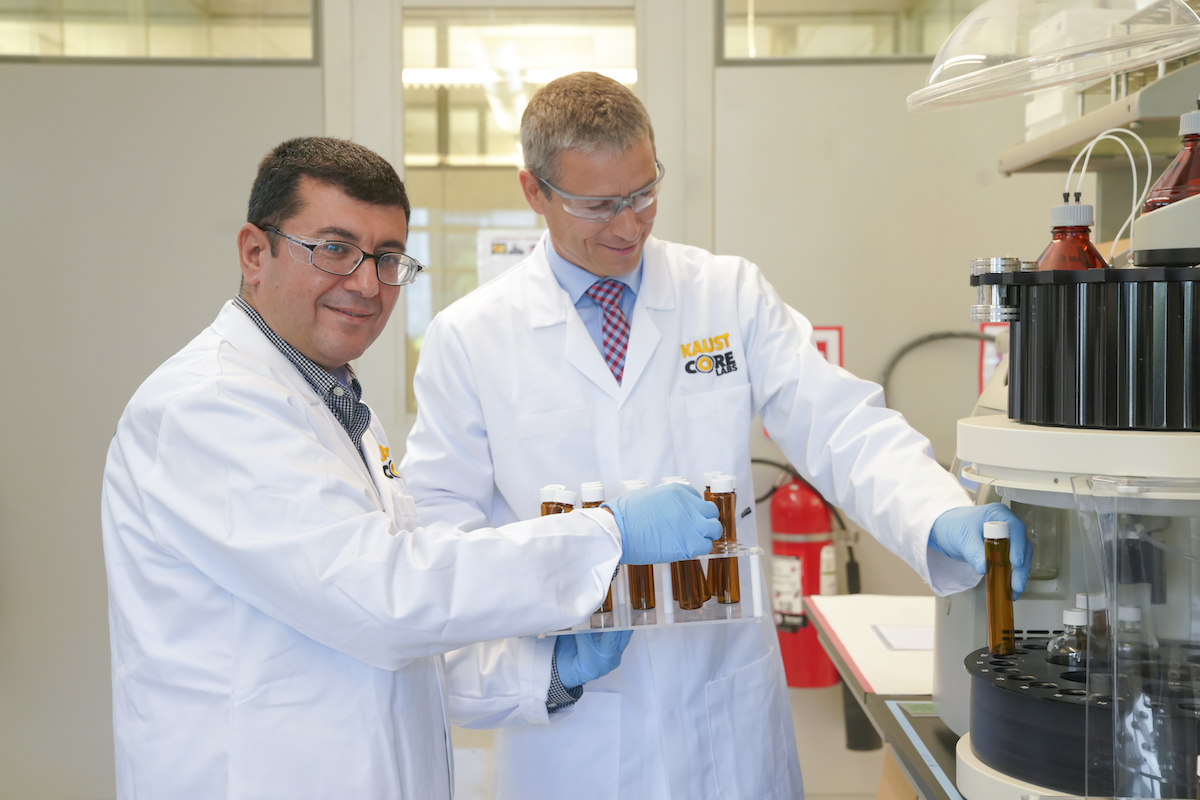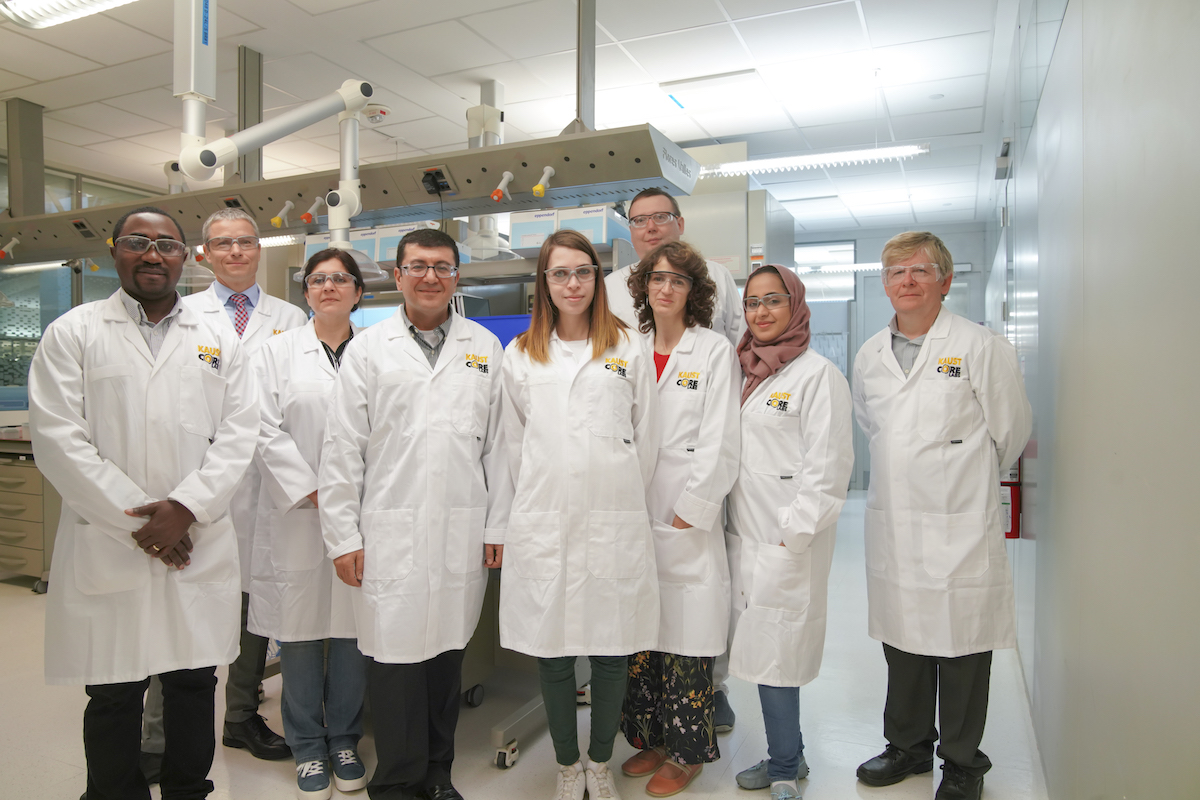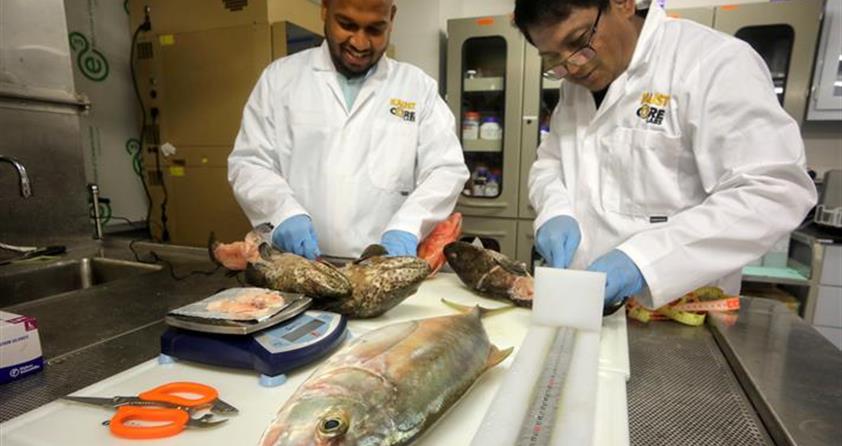By the Core Labs team and Andrea Hulsbosch
Knowing whether food is safe to eat has become a worldwide concern. KAUST and King Abdulaziz City for Science and Technology (KACST) have partnered to restore confidence when consuming fish and other seafood coming from the waters surrounding Saudi Arabia.
To accomplish the fundamental and strategic initiative, KACST provided funding to establish an environmental contaminants lab at the University's Analytical Chemistry Core Lab (ACL). The KAUST Coastal & Marine Resources Core Lab (CMR) and ACL collaborated to design a comprehensive project to assess the quality and safety of fishery products in the Red Sea and the Arabian Gulf. Scientists from CMR collect the fishery samples, which are then submitted to ACL for processing and analysis.
KAUST scientists work closely with Professor Sulaiman Mohammed Alfadul, a researcher at KACST, on advice related to project execution, data analysis and interpretation.
"The collaboration between ACL and CMR originated in 2015, when KACST approached KAUST with the proposal to join forces on a major project," said Heiko W. Langner, director of ACL. "We were asked to conduct an assessment of the environmental contaminants in Saudi Arabia's marine resources."

Ma’an Amad (left), lead scientist at the KAUST Analytical Chemistry Core Lab (ACL), and Heiko Langner, ACL director, assist the team in assessing the quality and safety of fishery products from the Red Sea and Arabian Gulf.
The goal is to test a representative sample of the seafood that is regularly consumed within the Kingdom. Given the nationwide scale of the project, the results will have a strategic impact on the Kingdom's environmental and public health management. The sought end result, Langner said, is "to determine the exposure status of the Saudi population to these environmental contaminants." In addition, there will be "recommendations as to which and how much seafood is safe to eat in any given area along the coast," he explained.
CMR scientists selected about a dozen representative sections along Saudi Arabia's coasts—from Jizan all the way to the northern part of the Red Sea and from the Arabian Gulf that stretches along the country's Eastern Province. In those sections, they collected over 1,000 samples of various sea life species.
"This kind of study requires a careful execution of the field sampling program to avoid any incidence of contamination during the collection of specimens and subsequent dissection of the tissue samples for chemical analysis," explained Nabeel Alikunhi, the CMR scientist who is primarily responsible for executing the field sampling program of the project.

The team from the KAUST Analytical Chemistry Core Lab plays an important role in the KAUST-KACST collaboration assessing the quality and safety of fishery products from the Red Sea and Arabian Gulf.
It is the task of ACL to determine the actual quantity of contaminants that include arsenic, mercury and many other toxic metals, pesticides and so called polycyclic aromatic hydrocarbons that occur as byproducts of petroleum processing in fish and other sea organisms. "We built a completely new analytical lab for this project [that] uses highly automated high-throughput methods to determine both organic and inorganic environmental contaminants," said Ma'an Amad, ACL's lead scientist. "In the interest of a more efficient workflow, the seven to eight scientists in this new lab work alongside robots. A similar lab without this level of automation would require 15 researchers. Each instrument can make up for two to three people."
"This type of research requires international standard methods and wasn't possible to conduct in Saudi Arabia before," said Zenon Batang, CMR's lead scientist. "The close collaboration between several Core Labs allows us to offer complete solutions to our clients; therefore, it is no longer necessary to contract any of this work out of the Kingdom."
"The recommendations on safe consumption levels of Saudi fishery products are expected by July 2019, as per the end of this collaboration between KAUST and KACST. [O]nce we conclude this project, we are looking forward to working together with KAUST on other projects," said Professor Ahmed Mohamed Alabdulkader, director general, General Directorate for Research Grants at KACST.

